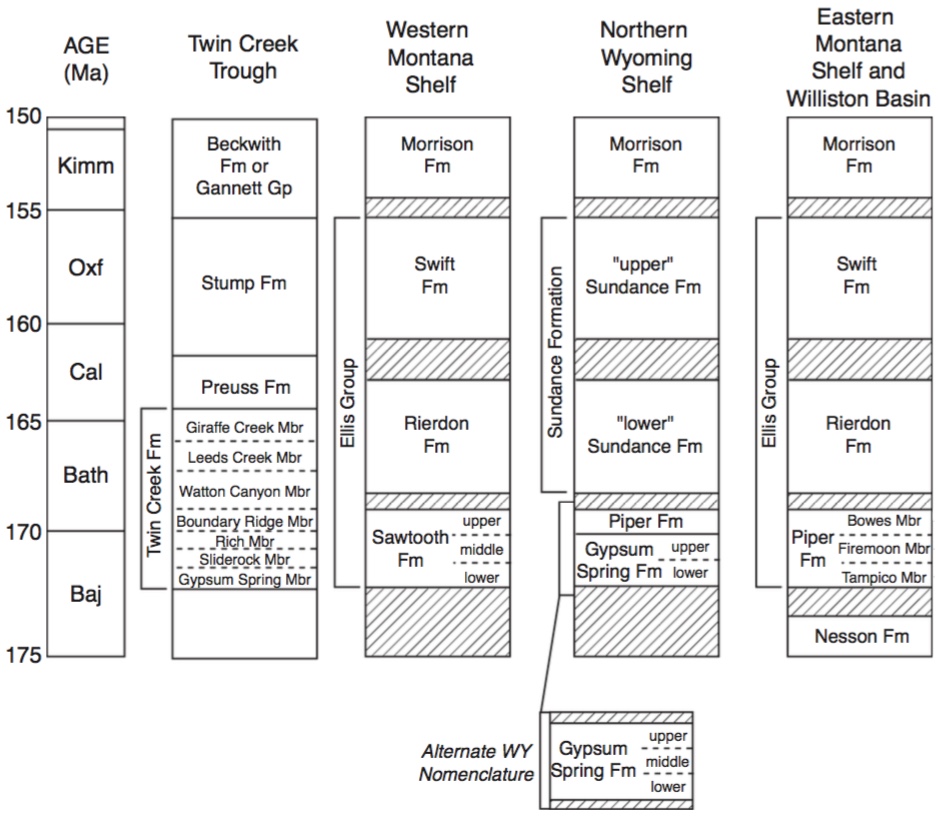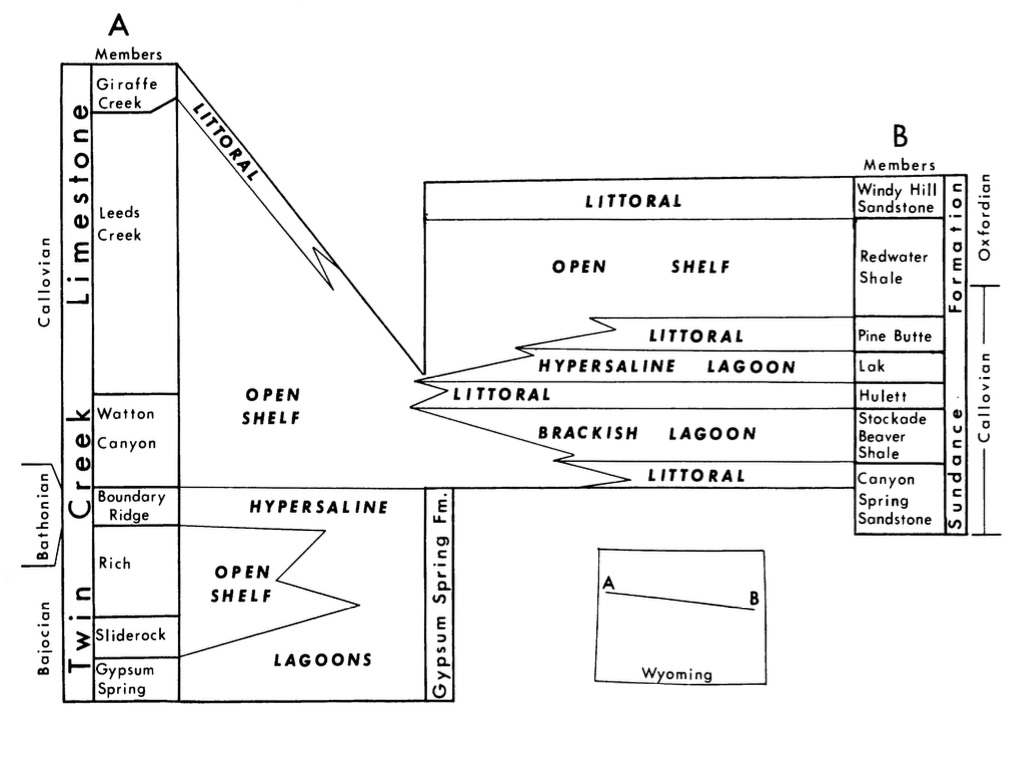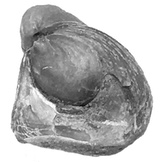Lithostratigraphic Overview
The lithostratigraphy of the Sundance Seaway is complicated for several reasons. The width of the seaway leads to substantial lateral facies changes. The great width of the seaway has also led to state-line (or nearly so) stratigraphy, where similar rocks might bear a different name on opposite sides of some arbitrary line. The presence of multiple unconformities not only causes units to be locally missing from erosion, it also allows for some units to be developed only locally, such as incised valley fills. These unconformities are one manifestation of relative sea-level changes, which also cause facies to vary vertically. As a result, there are multiple lithostratigraphic schemes in the Sundance Seaway. As our work on the sequence stratigraphy expands beyond where we started in the Bighorn Basin, we are beginning to understand the genetic relationships between these lithostratigraphic units.

Lithostratigraphic nomenclature of Idaho, Montana, and central Wyoming
Illustration from Parcell and Williams, 2005
In central Wyoming, the marine Jurassic includes two main units, the older Gypsum Spring Formation and the younger Sundance Formation, each of which is divided into members. The Gypsum Spring Formation is divided into three informal units: (1) a lower unit containing red mudstone and gypsum that overlies an unconformity, (2) a middle carbonate unit, and (3) an upper red mudstone unit.
The Sundance Formation has been divided in multiple ways, but in most areas it consists of five divisions: (1) a basal ridge-forming unit which may be sandstone or limestone, called the Canyon Springs Member, (2) a valley-forming unit composed of shale, called the Stockade Beaver Shale, (3) a middle ridge-forming unit which may be sandstone or limestone, called the Hulett Member, (4) another valley-forming unit composed primarily of green-gray mudstone, called the Redwater Shale, and (5) a prominent ledge-forming unit composed of sandstone, called the Windy Hill Member, which is overlain by the terrestrial Morrison Formation.
Because the Sundance has a lower part with carbonates and mudstone (units 1–3) and an upper unit with primarily sandstone and shale (units 4–5), and because these two divisions are separated by a regional unconformity, the Sundance is also sometimes divided informally into ‘lower’ and ‘upper’ members. Coupled with the Gypsum Spring Formation, this produces a three-fold division of the marine Jurassic.
This same stratigraphy is reflected in the lithostratigraphic nomenclature of Montana, although the names differ. In eastern Montana, the marine Jurassic is divided into the Piper Formation (equivalent to the Gypsum Spring), the Rierdon Formation (equivalent to the ‘lower’ Sundance), and the Swift Formation (equivalent to the ‘upper’ Sundance). These divisions are also used in western Wyoming, with the lowest unit being called the Sawtooth Formation (equivalent to the Piper and Gypsum Spring formations). Confusingly the upper red mudstone unit of the Gypsum Springs Formation in northern Wyoming is sometimes called the Piper Formation, a usage that should be abandoned because the Gypsum Spring Formation of Wyoming and the Piper Formation share the same three-fold division, with a one-to-one correspondence of their members.
This structure breaks down to the east in the Black Hills region and to the west near the Idaho border. These differences primarily stem from regional facies changes going depositionally updip to the east and depositionally downdip to the west.

Lithostratigraphic nomenclature from the Black Hills to Idaho
Illustration from Wright, 1974
To the east, the Gypsum Springs Formation becomes much thinner and loses its trifold character. The Sundance Formation contains a shallower set of facies, so the fivefold character of central Wyoming is modified. In eastern Wyoming, the Hulett Member is overlain by a red mudstone facies called the Lak Member, which is overlain by a marine sandstone called the Pine Butte Member, which is in turn overlain by the Redwater Shale.
Towards Idaho, the section thickens almost five-fold, and many more members have been recognized. The Gypsum Spring and ‘lower’ Sundance (or equivalently, the Piper and Rierdon) are replaced with the Twin Creek Formation. The Twin Creek is divided into seven members, which are in ascending order, the Gypsum Spring Member (equivalent to the lower member of the Gypsum Spring Formation), the Sliderock Member and Rich Member (which are both equivalents of the middle member of the Gypsum Spring Formation), the Boundary Ridge Member (equivalent to the upper member of the Gypsum Spring Formation), Walton Canyon Member (equivalent to the Canyon Springs Member), and finally the Leeds Creek Member and the Giraffe Creek Member (both equivalent to the Stockade Beaver Shale). The unconformity separating the ‘lower’ and ‘upper’ members of the Sundance is replaced with the red mudstone Preuss Formation (correlative with the famous eolian Entrada Sandstone of Arches National Park and surrounding areas), and the equivalent of the ‘upper’ member of the Sundance is called the Stump Formation.
If you find this bewildering, you are not alone. These name changes have hampered much work on the marine Jurassic of the western United States, and generations of geologists have struggled with how to correlate these units. From a sequence stratigraphic perspective, these name changes become understandable, even predictable.

